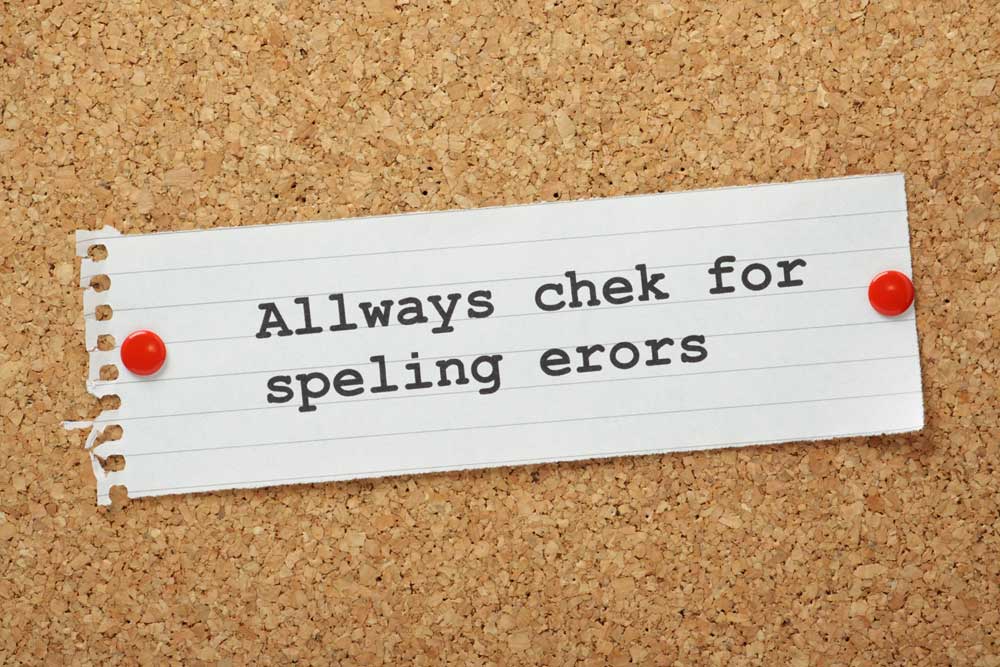As I continually browse the web, I find more and more websites where attention to detail was obviously not a motivating factor for the website developer or owner. This is a shame because they are not doing themselves any favor by skipping over “the little things.” While the term “don’t sweat that small stuff” is popular, there are things you do need to “sweat” when it comes to looking professional.
People Really Don’t Care Attitude
Some people just aren’t “detail-oriented” by nature and they assume everyone shares their lack of concern for the little things, but I can assure you this is not true. Your visitors do notice these little things, whether you like to believe it or not. These details equate to professionalism. And, don’t we all want to appear to others as professional in our business?
Attention to detail, no matter what business you are in, makes for a better experience for your customers and clients. It shows your professionalism. Think about a stay at a hotel and the candy on your pillow and turn-down service you may get. Very nice, right? Or, a mint with your check at the end of a nice dinner at a restaurant. These are all little details that make the experience better for their customers. People do notice them, even if they seem like such “little things.” They are memorable.
The Beauty Is In The Details
You may be thinking, but how does that equate to attention to detail for a website. Paying attention to detail in your website design can mean something like serving up an uncluttered, high contrast, error free web page to your visitors. The beauty is in the details.
I have seen many website designers, whether professional or DIYers, try to zip through their projects as quickly as possible just to get them done or move on to the next one. They pay scant little attention to details that a more experienced or more detail-oriented website designer will notice.
The following are my picks for things that so many people overlook when designing their website that can make or break the professional appearance of it. Paying attention to these small details can increase your website engagement with visitors, because they realize you care about how things look and are willing to go the extra mile by your attention to detail.
Typos and Grammatical Errors
I realize that a few typos and grammatical errors can slip through the cracks, from time to time, especially if you write a lot of content for your site (which you should be doing, but that’s another article). It even happens to me and I hate myself for it when I find one or, even worse, have one pointed out to me. 🙁
So, while a few can be expected, a website that is filled with misspelled words and grammatical errors smacks of unprofessionalism. When you have so many, they do get noticed very quickly by others.
Too Much Happening On The Page
Sometimes designers, especially those who are used to print design and not web design, will try to bring the same experience from print to screen and it doesn’t translate well. Keep in mind the reading experience of ink on paper is quite a bit different than someone sitting in front of a computer screen, tablet or smartphone and reading it.
Many times designers and website DIYers will try to add too much to their design – too many drop shadows, borders, fonts, colors, etc. This makes for a cluttered look that they may be able to get away with in print, but not so much when someone is reading it from a screen.
Keeping your website simple, clean, uncluttered, and making good use of whitespace, is essential when designing it.
Lack of Contrast
One thing new designers or DIYers (and even some experienced professionals) also need to understand is that our eyes notice areas of high contrast first. And, items with low contrast are difficult to read for many.
Creating a website with low contrast, for instance a site that has a black background and gray text, makes for a poor user experience and smacks of someone not knowing what they are doing. Watch the details of the colors you pick for your website and make sure they offer a pleasant viewing experience to all visitors, no matter what device they are viewing your website on.
Lack of Consistency
Lack of consistency in a website is a big pet peeve of mine and probably one of the most important attentions to detail you should consider. Keeping your website consistent from page to page will give it a cohesive and finished look.
Try to keep your fonts to a minimum (maybe two, three at the most) and your color palette limited. Use repeat elements throughout your site to “tie it together.” Keep your page structures the same from page to page.
The difference between mediocrity and excellence is attention to detail. It can be what separates the good from the great.
Pay Attention and Watch Those Details
So, how does one learn to pay attention to details better and make their website look more professional.
- Stop rushing through it. When you rush through projects, you can’t properly look at the details of it. Make sure you plan enough time for your project to get done properly and with plenty of proofreading.
- Allow for plenty of break time. Trying to work on your website design project in one sitting is setting yourself up to miss those important details. You don’t need to necessarily take long breaks, but breaks are necessary. Even if they are only for a few minutes, and especially if you are stumped on a particular issue or point. I know often, especially when I am having a hard time figuring something out, a short break is all I need to get the “brain juices flowing” again or figure out a solution to a problem that is stumping me.
- Seek a second site of eyes. Having more eyes on your website, prior to launch, by people who can help you pick out things you might have missed, is always recommended. Make sure you are seeking help from people who can be objective and are not afraid to “tell it like it is,” and that you are open to their suggestions for improvement. The last thing you want is people who are “yes men” telling you only what you want to hear. Now is the time for unfettered objectivity.
- Recheck and review multiple times. Always review your work, even multiple times, for things you might have missed or details you overlooked. I can’t tell you how many times I review each and every article I write, or page I design, and still, after it has been launched, find something I need to fix. Most people will post something and then move on, missing important details they could have fixed.
- Look for “the little things.” When rechecking your site, pay attention to the small details. Look for misspelled words, typos, alignment this is off, or an extra white space where it doesn’t need to be. After you have made those corrections, take a small break and then come back and do it all over again. 9 times out of 10 I bet you will find something else you missed. 😉
Conclusion
All of these things matter, even if your website visitor isn’t consciously taking note of them. Subconsciously they can tell a professional site that has been created by someone who cares about detail, from a site that was put together in a lazy or quick manner.
The difference between mediocrity and excellence is attention to detail. It can be what separates the good from the great.
What type of details that people overlook often are a pet peeve of yours? Feel free to share in the comments below.
(Postcript: I can tell you that I published this story and came back and reviewed it 12 hours later. I found 4 errors that needed to be fixed and I am sure there are more. I will, in all likelihood, come back and read it again in a few days. It’s what I do… because details matter to me.)
- How a Boutique Web Design Agency Offers More Personalized Service - June 23, 2025
- When Should You Redesign Your Website? 7 Warning Signs - June 20, 2025
- We’re Honored: Named One of the Best Web Design Blogs in Florida by FeedSpot - June 10, 2025





